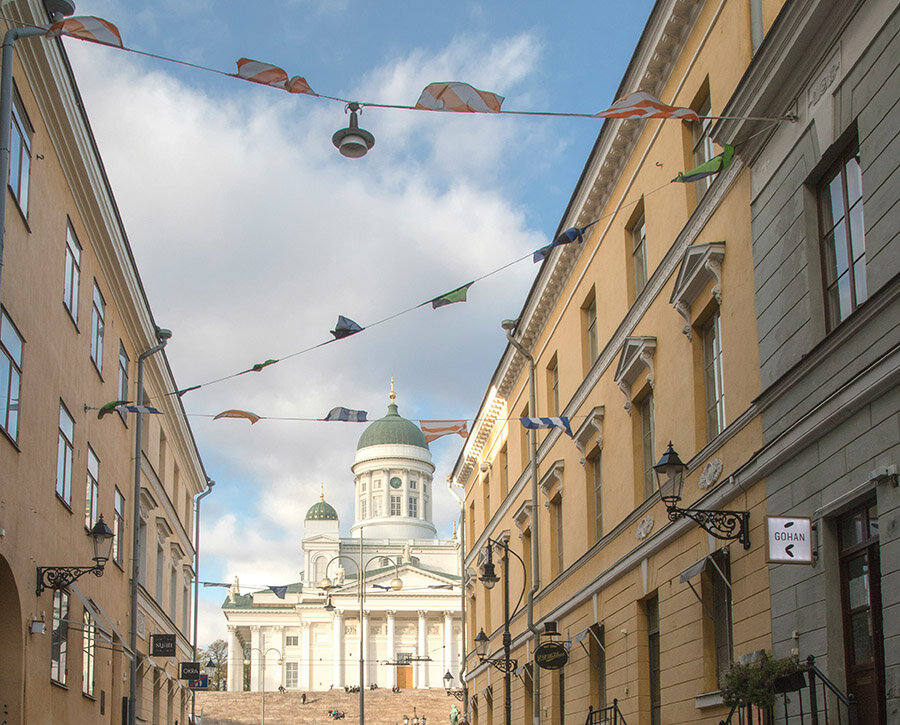читайте также
 Italy May End Tax Relief on Rental Income: What It Means for Landlords and Investors
Italy May End Tax Relief on Rental Income: What It Means for Landlords and Investors
 Luxury Travel Takes Off: How Demand Is Changing and Where to Find ‘Quiet Luxury’
Luxury Travel Takes Off: How Demand Is Changing and Where to Find ‘Quiet Luxury’
 Airbnb shifts all fees to property owners
Airbnb shifts all fees to property owners
 Most Punctual Airlines of September 2025: Who Arrived on Time and Why It Matters
Most Punctual Airlines of September 2025: Who Arrived on Time and Why It Matters
 Ten Years to a Passport: New Citizenship Rules in Portugal
Ten Years to a Passport: New Citizenship Rules in Portugal
 Top 25 World Economies 2025: Who Shapes Global Growth
Top 25 World Economies 2025: Who Shapes Global Growth
Finnish Housing Market in 2025: Fewer Transactions, Cautious Demand & Investment Risks

The Finnish housing market shows signs of a slowdown. Sales volumes are declining, real prices are falling, and the share of renters has reached a record high, according to Statista. These trends reflect both recent macroeconomic instability and growing disparities between the Helsinki metropolitan area and the rest of the country.
In 2024, around 34,500 apartments and flats were sold in Finland – the lowest figure in five years. Sales of detached houses also declined. While the real price index for residential plots in Helsinki reached a local peak of 137.7 points (base year 2015), in other regions it was just 82.2. This means building plots in the capital are almost 1.5 times more expensive than the national average. Meanwhile, prices of existing homes continued to fall: the index dropped to 81.4 points, signaling stagnation since 2021 and a less favorable market for sellers.
According to CBRE, average secondary housing prices in 2024 declined by 2.8% in the Helsinki Metropolitan Area (HMA), 5% in Tampere, and 2.7% in Turku. In Q4 alone, the drops were 1.4% (HMA), 3.6% (Tampere), and 0.1% (Turku). Meanwhile, rental rates rose by 0.4% in HMA, 2.1% in Turku, and 2.4% in Tampere. Since 2015, rents in Helsinki have grown faster than home prices, further fueling demand for rentals.
Urban areas – especially Helsinki, Vantaa, and Espoo – continue to face high housing demand and limited supply. In rural areas, while housing is cheaper and more available, these regions lack urban infrastructure, employment opportunities, and services. This disparity intensifies demand polarization and prompts internal migration toward cities where supply is still insufficient.
According to Etuovi.com [url=https://internationalinvestment.biz/real-estate/5577-samye-vostrebovannye-rajony-finljandii-gde-pokupajut-i-investirujut-v-zhile.html], housing interest in 2025 remains focused on top neighborhoods in major cities. In Helsinki: Töölö, Ullanlinna, Lauttasaari, and Laajasalo. In Espoo: Tapiola. In Vantaa: Tikkurila. In Oulu: Haukipudas, Oulunsalo, Metsokangas, and Kivikkokangas. In Tampere and Turku, central areas such as Keskusta, Kaleva, Pyynikki, and Hirvensalo are in high demand. Quickest sales are recorded in Mankkaa (50 days), Kartanonkoski (43), Ylästö (53), and Kivikkokangas (26). These variations reflect uneven market liquidity and neighborhood-specific dynamics.
In 2023, about 44% of Finns lived in detached houses, 38% in apartments. Homeownership matches the EU average but is gradually declining. Despite long-standing aspirations to own, economic uncertainty, stricter credit access, and debt concerns are pushing more citizens – especially youth, students, and migrants – to rent. As a result, the renter share reached a record 31% in 2023.
About 40% of rental apartments are owned by private individuals or small investors, 30% by municipalities, and less than 30% by institutional investors. While this structure provides stability, increased pressure on the rental sector – especially in major cities – drives up rents amid limited supply, creating additional challenges for vulnerable populations.
In 2024, new construction hit a low: completed housing in HMA fell by 40%, and new starts by 51%. Forecasts for 2025 estimate around 20,000 new units – far below the 38,000 needed annually. A significant supply boost is not expected until 2027. Nearly half of recent projects fall into government-subsidized rental housing (ARA-asunnot).
Investment in residential real estate grew by 5% in 2024, reaching €560 million. The sector ranked second by total investment volume, accounting for 22% of transactions. Prime yields in HMA stayed at 4.5%, while Turku and Tampere offered up to 5% but with lower liquidity. Most transactions were concentrated in HMA, led by investors such as Slatto and Sirius Capital Partners.
Average rental yields, according to international platforms, range from 3–4% annually, lower than many other EU markets. Foreign investor participation remains limited. Russians are banned from purchasing property in Finland.
It’s also crucial to consider that service and utility costs vary significantly across municipalities, influencing final ownership costs and, in some cases, reducing investment appeal.





